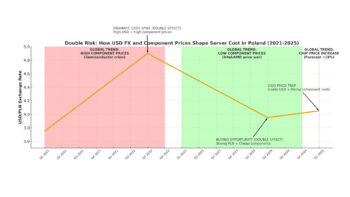The US Federal Communications Commission (FCC) is increasing pressure on Chinese electronics manufacturers. As reported by FCC chairman Brendan Carr, the largest e-commerce platforms in the US have already removed several million listings of devices deemed not permitted – from surveillance cameras to smart watches – from the likes of Huawei, ZTE, Hikvision and Dahua.
This is part of a broader strategy to limit the presence of Chinese technology in critical infrastructure. The FCC argues that the equipment could enable “citizen surveillance, disrupt communications networks and threaten US national security”. Technology companies have been ordered to implement new controls to prevent banned products from reappearing for sale.
The case is not new, but the intensity of the regulator’s actions is accelerating. Already, Huawei and ZTE were on the so-called Covered List – a list of restricted entities. Now, the FCC is preparing a vote on an even broader ban on the authorisation of devices containing components from companies deemed to be a risk. Significantly, the new regulations will also allow previous authorisations to be revoked if products are deemed a security risk.
This is the next stage in the technological separation between the US and China, covering telecommunications, semiconductors or the automotive sector. Cutting Chinese brands off from the US market has both a security and an economic dimension – it builds space for alternatives from domestic or allied manufacturers.
E-commerce platforms – although not officially listed – are likely to be giants such as Amazon, Walmart and eBay. For them, this means the need to build new certification filters and the risk of relationship tensions with Asian suppliers. For consumers, on the other hand – a possible restriction of access to low-priced electronics, which until now have come to the US in large numbers via marketplaces.
In the background, the question remains as to how much the FCC’s actions will actually curb the influx of unauthorised devices, and how much it will accelerate the growth of grey imports and intermediate platforms from outside US jurisdiction. However, Carr announces that the agency “will continue its efforts”, suggesting that this is just the beginning of a new chapter in the US-China technology war – this time at the level of retail platforms, not just infrastructure.












